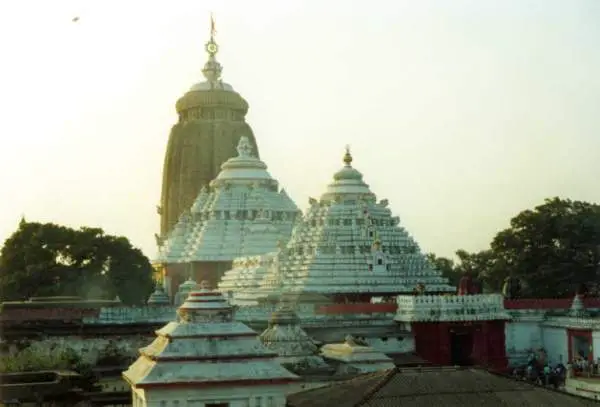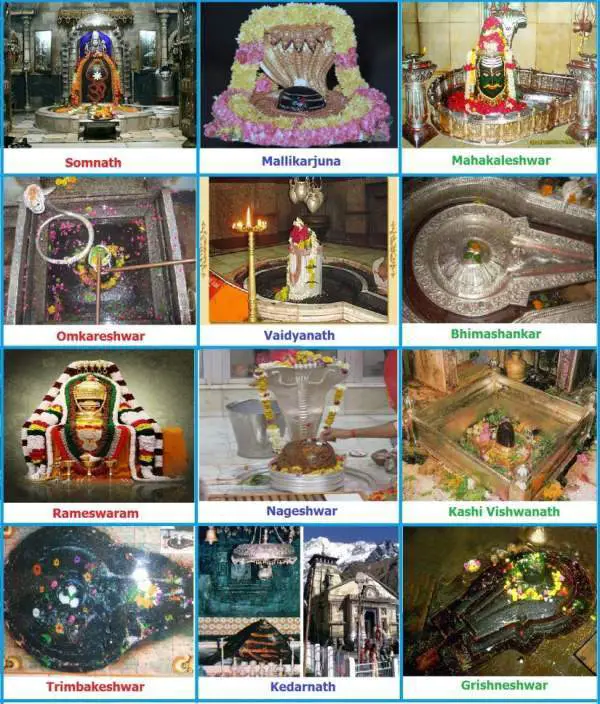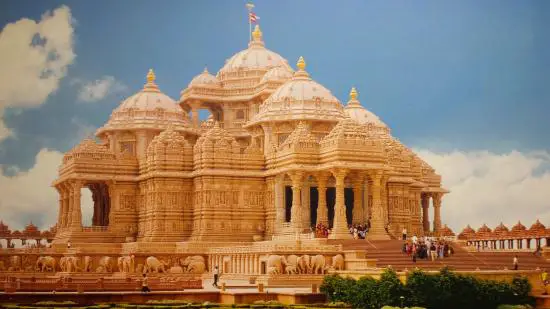Bhitargaon is a small village about 50km from Kanpur District in Uttar Pradesh. It is widely known for one of the oldest terracotta Bhitargaon Temple in India.
The temple had been built during the Gupta period in the late 5th century CE. Bhitargaon temple is regarded as the largest Indian brick temple from the time of the Gupta Empire.
This post shares with you Bhitargaon Temple Kanpur History.
Bhitargaon Temple is made entirely of brick. The temple has been heavily restored. However, several original features still remain.
The Bhitargaon Temple structure has been built in the form of a “terraced” brick building. Its frontend has a terracotta panel.
This Hindu shrine comes with a roof and a high Shikhara. However, its upper chamber did sustain substantial damage in the 18th century.
The temple has been built on a square plan and has double-recessed corners. It is an east-facing temple structure. The temple has a tall pyramidal spire over the Garbhagriha. Its walls have been decorated with terracotta panels with carvings of Shiva, Vishnu, and even aquatic monsters.
The temple site was discovered by Sir Alexander Cunningham in 1877-78. He was the First Archaeological Surveyor to the Government of India.
As per Cunningham, the temple measures 66 sq ft. It has indented corners. There is a small projecting hall before the entrance.
The entrance into the sanctum has a semicircular doorway. The bricks have been placed edge to edge instead of face to face. Cunningham had called this the “Hindu arch.”
The temple comes with a tall pyramidical spire (known as Shikhara) above the inner sanctum (Garbha Griha). This shikhara became a regular feature of the Nagara temple architecture in India.
The walls are 8ft thick. They have been decorated with terracotta sculptures. However, many sculptures have been heavily damaged and have made their way into museums. Some of the most notable sculptures are of:
- Shiva and Parvati seated together
- Lord Ganesha
- An eight-armed Vishnu
- Mahishasura Mardini
- Many animal figures
- Flora and foliage
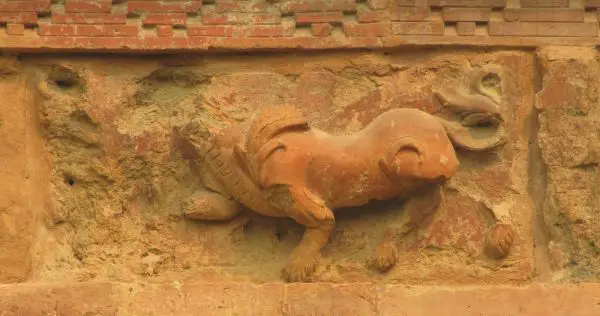
As of now, the temple is in a dilapidated state. It is said that the lightning struck it and damaged it. This happened a few years before the Sepoy Mutiny in 1857.
Its outer semicircular arch that leads to the entrance steps has fallen. Only the one that leads into the sanctum remains.
The structure that we see now was rebuilt from the masonry in 1905. Its top had been left untouched as there was no evidence of its original shape.
The Bhitargaon temple is believed to be a Vishnu temple as there is the Varaha incarnation at the temple’s back.
Now, we share with you a brief history of Bhitargaon Temple Architecture:
- No evidence has been found of the existence of temple architecture during the Vedic period.
- Over the generations, worshipping has been systematized, which paved the way for the evolution of temple structures
- Temple Architecture evolved from rock-cut temples to stone temples giving way to brick temples
- Many brick structures came around Gangetic plains which were rich in alluvial soil
- The brick temple at Bhitargaon has withstood the vagaries of time, which makes it so unique.
Architecture and layout of Bhitargaon Temple
- The construction material that has been used in this temple is bricks and terracotta
- The brick size used here is 18 x 9 x 3 inches
- The platform size on which the temple has been built is 36 feet x 47 feet
- The sanctum is 15 feet x 15 feet (internally)
- The sanctum structure is a double story
- The wall thickness is 8 feet
- The total height of the temple structure is 68.25 feet
- There is no window in the temple
- The temple walls have sculptures of Ganesha and Durga as Mahishasura Mardini. Stories representing the abduction of Sita and the penance of Nara-Narayana have also been carved out.
- Temple Shikhara is in the form of a stepped pyramid that got damaged by thunder in 1894.
- The entrance into the sanctum has a semicircular doorway
- Alexander Cunningham (Director-General of the Archeological Survey of India, 1871) has called it the “Hindu arch,” which was utmost peculiar to India
- The first story of sanctum fell in 1850
What is Bhitargaon Temple known for?
Bhitargaon Temple is the oldest remaining brick/terracotta Hindu shrine in India. It was discovered by Sir Alexander Cunningham in 1877-78, the First Archeological Surveyor to the Government of India.
Cunningham called it the “Hindu arch.”
The temple had been built in the 5th century CE during the Gupta period. The temple is a pure marvel in brick/terracotta, which has survived more than sixteen centuries.
It is one of India’s first temples with a tall trapezoidal structure (shikhara) above the inner sanctum. This became a regular feature of later Hindu temples in the Nagara style of architecture.
Moreover, the Bhitargaon Temple is regarded as the largest Gupta period temple. Its inner sanctum measures 15 feet x 15 feet. The temple exhibits superb workmanship in terracotta/brick.
The temple has many sculptures in terracotta of Hindu deities, including those of Shiva, Parvati, Ganesha, Vishnu, and Durga.
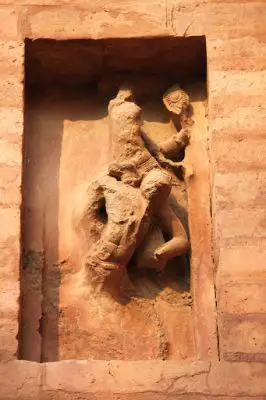
The temple is particularly known for its semicircular doorway, which leads into the sanctum.
The temple is believed to be dedicated to Lord Vishnu as it holds Varaha incarnation at the temple’s back.
The temple is said to be constructed by Gupta ruler Skandagupta. It has been built on a square plan and faces east. Its sanctum is a double-story. It has no window.
Its total height (from the ground to the top) is 68.25 feet. Although this temple has been heavily restored, there are still many original features to be seen.
Well, that’s all we have for you in this post on Bhitargaon Temple Kanpur History.
We hope that you would have found this post beneficial.
Thank you for visiting us at HindUtsav.


